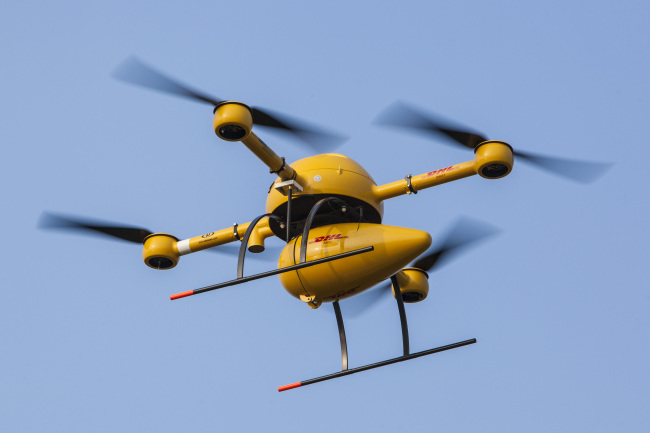Drones are widely expected to become a game-changer in the future delivery market.
Tech firms like Amazon, Google and Alibaba have announced their intentions to use drones for delivery in recent years, and are working on pilot programs. German logistics giant DHL was the first to start a regular drone delivery service, under the project name Parcelcopter 2.0, operating since September last year.
 |
DHL’s Parcelcopter 2.0, the world’s first delivery drone |
Even though drones are all the rage globally, Korea -- the second nation to develop its own unmanned tiltrotor aircraft -- is still reluctant to open its airspace to drones, largely due to safety concerns.
Under current aviation law, drones should be flown within the sight of the flier and their weight should not exceed 25 kilograms, which means commercial use here is almost impossible.
But more recently, the government is considering easing related regulations to boost the market.
In May, CJ Express, the nation’s largest logistics company, got approval to fly drones to deliver small parcels to isolated areas like islands. Deliveries will include medication and other goods that may be urgently needed.
The company developed its own delivery drone, named CJ SKY-DOOR, together with a German manufacturer last year.
The company has three drones now and plans to double the number in the coming years.
CJ has said the company has no immediate plans to use the drones for commercial purposes, but industry watchers predict the company could widen their adoption for more diverse services.
“The market is still in its infancy. But eased regulations will help elevate the market size greatly,” said Oh Jae-young, an analyst at Hyundai Securities, adding Korea is the seventh-largest player in the global drone industry.
Teal Group, an aerospace and defense consulting company, predicts the market for unmanned aircrafts will surge from $11.8 billion in 2013 to $89 billion by 2023. Commercial uses, which make up less than 10 percent now, could surge to claim 60 to 70 percent of the market, it said.
By Sang Youn-joo (
sangyj@heraldcorp.com)








